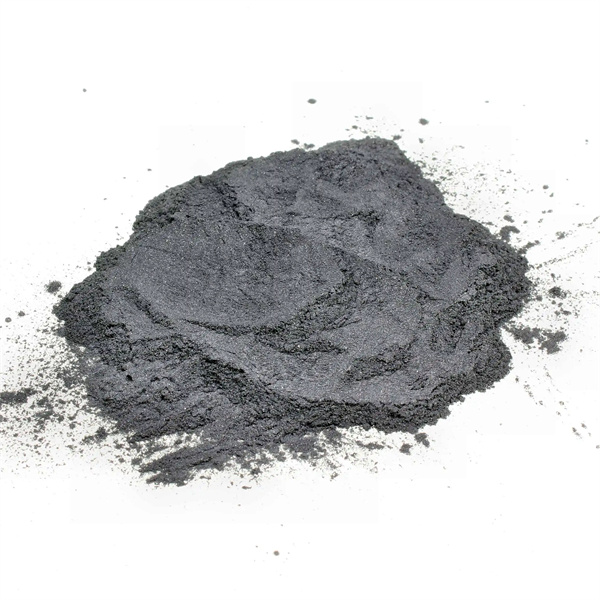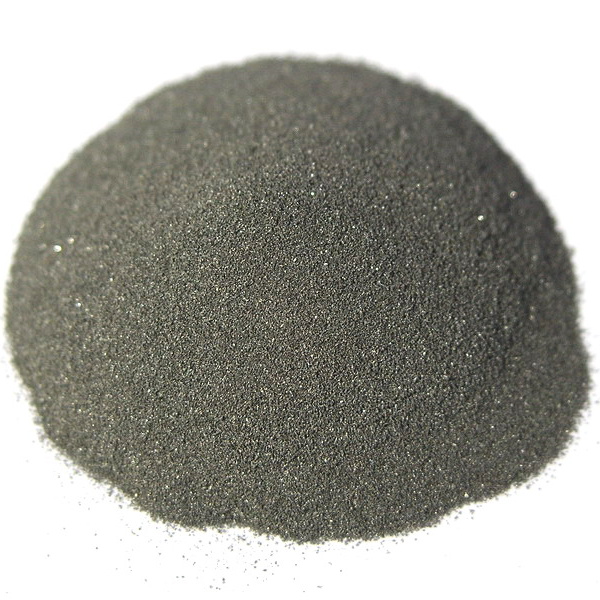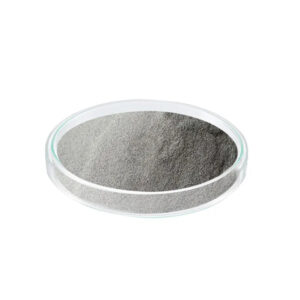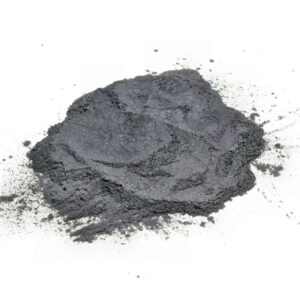Serbuk logam tahan api memungkinkan pembuatan aditif paduan yang sangat tahan panas yang tidak tertandingi oleh bahan lain. Panduan ini mencakup komposisi bubuk tahan api, spesifikasi partikel, data properti, harga, dan perbandingan untuk menginformasikan keputusan pengadaan.
Pengantar Serbuk Logam Tahan Api
Kemampuan utama yang ditawarkan oleh bubuk tahan api meliputi:
- Tahan terhadap suhu yang sangat tinggi
- Mempertahankan kekuatan tinggi pada suhu ekstrem
- Menahan deformasi dan keretakan creep
Paduan yang umum digunakan adalah:
- Paduan berat tungsten seperti W-Ni-Cu
- Paduan Molibdenum TZM
- Bubuk tantalum
Panduan ini memberikan pertimbangan saat memilih bubuk tahan api:
- Komposisi Paduan dan Metode Produksi
- Data Uji Sifat Mekanis
- Rekomendasi Distribusi Ukuran Partikel
- Morfologi, Kepadatan dan Karakteristik Aliran
- Estimasi Harga Berdasarkan Volume Pesanan
- Perbandingan Ketahanan Oksidasi dan Korosi
- Pro vs Kontra Terkait Bentuk Padat
- Tanya Jawab tentang Pengoptimalan Parameter Pencetakan

Komposisi Serbuk Logam Tahan Api
Tabel 1 menunjukkan komposisi serbuk logam tahan api dengan penambahan unsur utama dengan beberapa variasi tergantung pada varian paduan:
| Paduan | Elemen Paduan Utama |
|---|---|
| Paduan Berat Tungsten | W, Ni, Cu, Fe |
| Molibdenum TZM | Mo, Ti, Zr |
| Tantalum | Menghadapi |
Penambahan kecil karbon, kalium, silikon, dan boron juga menstabilkan struktur mikro dan ukuran butir yang disesuaikan untuk ketahanan mulur pada suhu tinggi, tergantung pada kondisi pengoperasian.
Sifat Mekanis dan Metode Pengujian
Meja 2 menunjukkan sifat mekanik minimum tipikal yang dipenuhi oleh paduan serbuk logam tahan api, dengan nilai aktual yang bervariasi berdasarkan geometri pembuatan, pasca-pemrosesan, dan perlakuan panas:
| Paduan | Kepadatan | Kekuatan Tarik ** Kekuatan Tarik ** | Metode pengujian |
|---|---|---|---|
| Paduan Berat Tungsten | 18 g/cc | 550 MPa | ASTM E8 |
| Molibdenum TZM | 10,2 g/cc | 485 MPa | ASTM E8 |
| Tantalum | 16,6 g/cc | 207 MPa | ASTM E8 |
Memvalidasi sifat lot bubuk yang dikirim dengan hati-hati terhadap sertifikasi melalui pengambilan sampel untuk memastikan konsistensi.
Rekomendasi Ukuran Partikel Logam Tahan Api
Tabel 3 menunjukkan distribusi ukuran partikel yang umum digunakan untuk serbuk tahan api berkualitas:
| Kisaran Ukuran | Jaring Khas | Rentang Pencetakan Umum |
|---|---|---|
| Baik. | -325 mesh | 15-45 mikron |
| Standar | -100 mesh | 149 mikron |
| Kasar | -60 +100 mesh | 250 mikron |
Karakteristik bubuk penting lainnya:
- Morfologi partikel bulat
- Laju aliran yang baik melebihi waktu corong aula 30-an
- Kepadatan semu dalam 5% dari kepadatan sebenarnya
- Kadar oksigen dan kelembapan rendah
Menyeimbangkan kemampuan alir serbuk yang tinggi terhadap kebutuhan resolusi cetak melalui pemilihan dan distribusi ukuran partikel.
Morfologi Serbuk, Kepadatan dan Sifat Aliran
Tabel 4 membandingkan karakteristik serbuk antara tingkat kualitas umum yang memengaruhi ketahanan proses cetak:
| Parameter | Bubuk Berkualitas Tinggi | Bedak Tingkat Pemula |
|---|---|---|
| Morfologi | Sangat bulat | Bergerigi, tidak beraturan |
| Laju Aliran | Aliran aula> 35 detik untuk 50g | Aliran aula <25 detik untuk 50g |
| Kepadatan Nyata | > Kepadatan sebenarnya 90% | Seringkali <80% kepadatan sebenarnya |
| Kadar air | <0,01% | > 0,02% |
Sifat bubuk yang buruk memerlukan penyesuaian parameter yang ekstensif untuk mencapai kualitas cetak, sehingga mengurangi produktivitas.
Harga Bubuk Logam Tahan Api
Tabel 5 menguraikan harga bubuk refraktori kasar dalam kondisi pasar normal:
| Volume pesanan | Perkiraan Harga |
|---|---|
| 10 kg | $450 + / kg |
| 100 kg | $275 + / kg |
| 500+ kg | $200 + / kg |
| 1000+ kg | Diskon subkunci |
- Paduan premium memiliki harga dasar yang lebih tinggi
- Pesanan dalam jumlah besar di atas 500 kg memungkinkan pengurangan harga >40%
- Harga pasar aktual yang terkait dengan indeks komoditas
- Memvalidasi hasil panen yang sebenarnya vs fraksi yang dapat digunakan dari pemasok dengan hati-hati
Sifat Ketahanan Oksidasi dan Korosi
Serbuk logam tahan api menawarkan titik leleh yang sangat tinggi dan stabilitas dalam lingkungan yang mengoksidasi:
Tabel 6
| Paduan | Titik Leleh | Ketahanan Oksidasi |
|---|---|---|
| Paduan Berat Tungsten | 1400°C | Luar biasa |
| Molibdenum TZM | 2600°C | Luar biasa |
| Tantalum | 2996°C | Ekstrim |
Sifat-sifat yang berasal dari kandungan kromium, aluminium, dan silikon yang tinggi menciptakan penghalang oksida yang kuat yang mencegah hilangnya material bahkan pada suhu ekstrem yang mendekati titik leleh.
Pro vs Kontra: Bentuk Serbuk vs Padat
Tabel 7
| Keuntungan | Kekurangan | |
|---|---|---|
| Bubuk Logam Tahan Api | Geometri yang kompleks | Biaya lebih tinggi |
| Kekuatan suhu tinggi yang sangat baik | Pengolahan pasca | |
| Pengurangan berat badan | Optimalisasi parameter | |
| Logam Padat Tahan Api | Biaya lebih rendah | Batas bentuk |
| Ketersediaan | Sangat berat | |
| Kemampuan mesin | Limbah material |
Secara umum, serbuk refraktori membenarkan harga premium untuk komponen kompleks bervolume rendah di mana ketahanan termal sangat penting. Bentuk produk pabrik standar menawarkan keterjangkauan untuk bentuk sederhana dalam jumlah besar.
Menggabungkan bentuk-bentuk pasokan secara strategis mengurangi biaya program secara keseluruhan.

Pertanyaan Umum
Tabel 8 - Pertanyaan umum:
| PERTANYAAN YANG SERING DIAJUKAN | Jawaban |
|---|---|
| Haruskah saya meninjau laporan pengujian? | Ya, memvalidasi data sertifikasi yang menunjukkan kualitas bubuk |
| Berapa ukuran partikel bubuk yang harus saya gunakan? | 15-45 mikron menyeimbangkan resolusi dan aliran |
| Apa yang memengaruhi konsistensi? | Metode produksi mempengaruhi variabilitas - lelehan vakum adalah yang terbaik |
| Berapa banyak yang harus saya beli pada awalnya? | Mulai dari yang kecil, beli lebih banyak setelah prosesnya divalidasi |
Tabel 9 - Saran yang berfokus pada aplikasi:
| PERTANYAAN YANG SERING DIAJUKAN | Jawaban |
|---|---|
| Bagaimana cara mengoptimalkan komponen nosel roket? | Gunakan bubuk ekstra halus <10 mikron W atau Mo untuk mencetak saluran sub 2mm |
| Pendekatan pemrosesan pasca mana yang menurunkan porositas? | Pengepresan isostatik panas dengan atmosfer lembam melindungi dari oksidasi |
| Paduan tahan api mana yang memaksimalkan ketahanan mulur? | Pertimbangkan penambahan kalium, silikon, dan boron dalam paduan berat tungsten berdasarkan suhu operasi |
| Bagaimana cara menyesuaikan parameter untuk resolusi fitur yang sangat halus? | Memperlambat kecepatan pemindaian, meningkatkan jarak penetasan, menggunakan ketebalan lapisan terkecil yang memungkinkan mesin |







